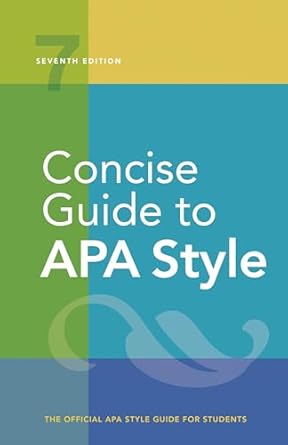[toc]
mastering abbreviations a guide for clear communication
Concise Guide to APA Style: 7th Edition (OFFICIAL)
Page 136 Review
Navigating Abbreviations: A Deep Dive into Clarity and Consistency
This ebook excerpt delves into the crucial aspects of using abbreviations effectively, ensuring clarity and consistency in written communication.
Let’s unpack the guidelines presented, focusing on definition, placement, and formatting.
Defining Abbreviations: The Cornerstone of Understanding
The text emphasizes the importance of explicitly defining abbreviations upon their first use.
This principle is outlined as:
“When you first use a term that you want to abbreviate in the text, present both the full version of the term and the abbreviation.”
This ensures that the reader is never left guessing the meaning of an abbreviation, promoting comprehension and preventing misinterpretations.
The excerpt provides clear instructions on how to introduce abbreviations in both the main text and headings.
Contextual Definition: Headings, Sentences, and Parentheses
The guidelines are nuanced, addressing different contexts within the text.
Here’s a breakdown:
* **Headings:** “When the full version of a term appears for the first time in a heading, do not define the abbreviation in the heading; instead, define the abbreviation when the full version next appears.
Use abbreviations in headings only if the abbreviations have been previously defined in the text or if they are listed as terms in the dictionary.”
This prevents clutter in headings while maintaining clarity.
Only use an abbreviation in a heading if it is defined elsewhere, or is so common that is included in the dictionary.
* **Sentences:** “When the full version of a term first appears in a sentence in the text, place the abbreviation in parentheses after it.”
*Example*: “attention-deficit/hyperactivity disorder (ADHD)”
* **Parenthetical Text:** “When the full version of a term first appears in parenthetical text, place the abbreviation in square brackets after it.
Do not use nested parentheses.”
*Example*: “(i.e., attention-deficit/hyperactivity disorder [ADHD])”
The use of square brackets within parentheses provides a clear visual distinction, avoiding confusion when dealing with multiple levels of parenthetical information.
Citations and Abbreviations: Maintaining Order
When a citation is needed alongside an abbreviation, the excerpt provides a specific format:
“If a citation accompanies an abbreviation, include the citation after the abbreviation, separated with a semicolon.
Do not use nested or back-to-back parentheses.”
*Example*: “Beck Depression Inventory-II (BDI-Il; Beck et al., 1996)”
This ensures that the citation is clearly associated with the abbreviation without creating convoluted or ambiguous parenthetical structures.
Abbreviations in Tables and Figures: Redundancy for Clarity
A key point emphasized is the independent nature of tables and figures regarding abbreviations:
“Define abbreviations used in tables and figures within each table and figure, even if the abbreviations have already been defined in the text.”
This redundancy ensures that readers can understand the tables and figures without needing to refer back to the main text.
The excerpt provides multiple options for defining abbreviations within tables and figures:
“The abbreviation can appear in parentheses after first use of the term within the table or figure, including in the table or figure title, or the definition can appear in a table or figure general note or a figure legend.”
However, it also provides an important exclusion:
“Do not define abbreviations that do not appear in a table or figure.
Do not define or write out standard abbreviations for units of measurement and statistics in a table or figure (see Sections 6.10 and 7.15).”
This helps prevent both clutter and redundant definitions of commonplace abbreviations.
Formatting Abbreviations: Plural Forms
The final point addresses the formation of plural abbreviations:
“To form the plural of most abbreviations and statistical symbols, add a lowercase “s” alone, without an apostrophe.”
*Example*: “DOIs”
This simple rule ensures consistency in pluralizing abbreviations, avoiding the common mistake of using an apostrophe.
Conclusion
In conclusion, this excerpt provides a comprehensive guide to using abbreviations effectively.
By adhering to these guidelines, writers can ensure clarity, consistency, and professionalism in their work.
The emphasis on defining abbreviations, contextual placement, and proper formatting contributes to a more accessible and understandable reading experience.
Buy full ebook for only $18: https://www.lulu.com/shop/american-psychological-association/concise-guide-to-apa-style-7th-edition-official/ebook/product-rmzpq54.html?page=1&pageSize=4
Mastering Abbreviations A Guide For Clear Communication
Read more: Abbreviations Guide: APA Style & Units of Measurement


Leave a Reply